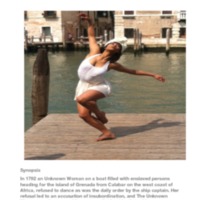
The Woman Who Refused to Dance
In Autumn 2007, the opera 'The Woman Who Refused To Dance' by composer and conductor Shirley J Thompson was performed at Westminster Palace, Houses of Parliament. The piece was based on a 1792 print by Isaac Cruickshank - entitled 'The abolition of the slave trade, or the inhumanity of dealers in human flesh exemplified in the cruel treatment of a young negro girl of 15 for her virgin modesty' - depicting a woman who refused to dance on board a slave ship, and who was hung from one leg as punishment. The opera has recently been re-premiered to mark the 210th anniversary of the abolition of the transatlantic slave trade.
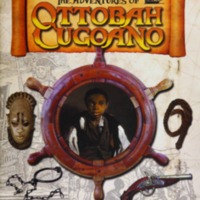
The Adventures of Ottobah Cugoano
The Adventures of Ottobah Cugoano is a book written for young readers, written by Marcia Hutchinson and Pete Tidy, and published by Primary Colours as part of the Freedom and Culture 2007 initiative. Ottobah Cugoanao was an African abolitionist, captured in 1770 in Fante (present-day Ghana) and sold into slavery. He was eventually made free and baptized John Stuart in London. Stuart became active in Sons in Africa and through his publications campaigned for abolition. A Key Stage 2 and Key Stage 3 Teaching Pack was produced to accompany the adventure story, written by Marcia Hutchinson, Pete Tidy and Shazia Azhar, with a foreword by David Lammy MP.
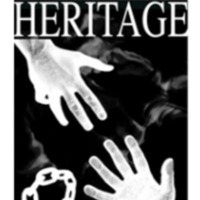
Dark Heritage
Dark Heritage from Bee Arts Community Interest Company comprised The DARK, a sonic art installation, and accompanying participatory educational activities. The DARK touring installation is a pitch black space designed to bring home the horrors of the transatlantic slave trade in the 18th century. The three dimensional soundscape uses ghosts as metaphors for the hidden aspects of the past, based on the Liverpudlian slave-ship worker Edward Rushton, slave ship Captain John Newton, and Kunie, an African man who met Rushton aboard an American ship. A programme of public sessions and creative educational workshops aimed at schools, colleges, youth and community groups were produced in collaboration with Kingswood Primary School in Lambeth. Dark Heritage travelled to six locations in the UK in 2007-08 starting in Greenwich, travelling to Ipswich, Gloucester, University of Hertfordshire, Norwich and finishing in Manchester.
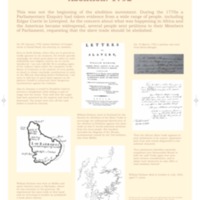
Dumfries and Galloway and the Transatlantic Slave Trade
An exhibition exploring the connections between the Scottish region of Dumfries and Galloway and the transatlantic slave trade toured Dumfries Museum, the Stewartry Museum in Kirkcudbright and Stranraer Museum. At each venue, the exhibition was accompanied by displays of material and a lecture. The catalogue of new research to supplement the exhibition by Frances Wilkins set out to correct misunderstandings about the role of people from the region in the transatlantic slave trade, to prove a history of connections independent of Glasgow or anywhere else. Evidence suggests that men from smaller towns such as Dumfries and Kirkcudbright were involved in the transatlantic slave trade as merchants, slave traders or plantation owners. For example, in the late 18th century, plantation supplies were sent from Kirkcudbright to the island of Grenada; the vessels returned with rum, sugar, and cotton wool.
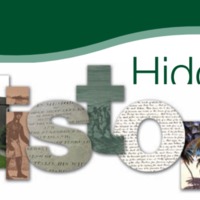
Hidden History of the Dales
This project was a collaboration between the Dales Countryside Museum in Hawes and North Yorkshire Record Office to research people and places of the Yorkshire Dales connected with Africa, the Caribbean and India. 'Hidden History' collected local stories of slave owners and traders, abolitionists, Africans and Asians who moved to the Dales, and others like the actor Ira Aldridge who passed through. The project included various community activities. Working with actor Joe Williams, pupils from the Wensleydale School explored the life of Olaudah Equiano and performed alongside Joe at the exhibition opening. There were drop-in sessions on exploring family history, carnival costume making, talks and music. The exhibition toured to other locations in Yorkshire, including Boroughbridge Library. The Dales Countryside Museum has continued to collect information relating to individuals who were connected with the Yorkshire Dales and the wider world.
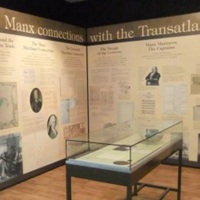
'A Necessary Evil'
An exhibition which explored the connections between the Isle of Man and the transatlantic slave trade between 1718 and 1807, as shown in assorted archives. Mounted in the Lower Folklife Gallery at the Manx Museum, the display revealed evidence of Manx captains, officers and crew recorded on slaving ships in the Port of Liverpool muster rolls or in probate records. Documentation shows Manx merchants dealing in ‘Guinea goods’ and investing in trading voyages; also Manx people part-owning or managing plantations in the Americas. The title quote was taken from the memoirs of Manxman Captain Hugh Crow, published posthumously in 1830. Crow wrote, ‘I have viewed the abstraction of slaves from Africa to our colonies as a necessary evil, under existing circumstances’. In July 1807 the last legal slave voyage for an English vessel began from Liverpool. Crow, aboard 'Kitty’s Amelia', took command en route to Bonny.